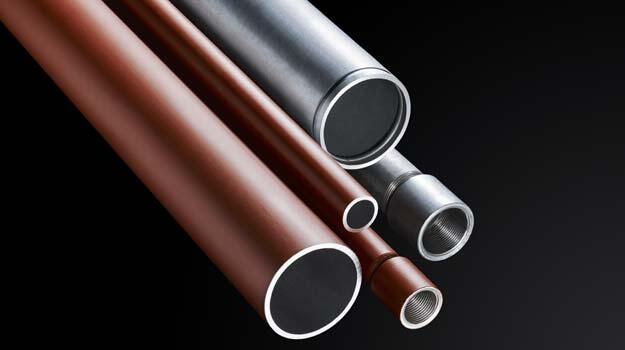The benefits of using hot-finished tubes over cold-formed alternatives.

Here, Stewart Jones, Senior Customer Technical Services Field Engineer, Conveyance Tubes at Tata Steel discusses the benefits of using hot-finished tubes over cold-formed alternatives.
Carbon steel pipework in heating systems can be exposed to a range of stresses, temperatures and pressures. Therefore, when specifying the steel tubes to be used within such systems, the benefits of installing the most suitable pipework cannot be overestimated.
Choosing the correct product not only helps deliver significant health and safety benefits, lower maintenance costs and a more efficient and effective system, but also ensures compliance with the required construction legislation and regulations.
With this in mind, it is always recommended when specifying steel pipework to confirm the tube manufacturing process.
Generally, carbon steel tubes are produced by a High Frequency Welded (HFW) process, but not all HFW products are the same. There are two possible production methods – either hot-finished or cold-formed. Although these processes appear to both create products of a similar specification, they actually perform quite differently in service. There are several underlying factors and properties that users should therefore be aware of.
Cold-formed steel tubes are produced from steel strip, which is shaped when cold and welded to produce a cylindrical tube shape. Whilst undergoing this process the material hardens due to the cold working and welding, resulting in internal stresses being induced in the tube.
The main stress occurs in the region adjacent to the weld seam, often referred to as the Heat Affected Zone (HAZ). Within this region, the steel has a distorted grain structure, resulting in a harder, less malleable material.
While the initial manufacturing process for hot-finished tubes is very similar to the cold-formed process, there is one vital additional step. Heating the steel tubes to very high temperatures removes all the internal stresses, refines the grain structure and completely eradicates the HAZ.
Compared to cold-formed steel tubes, there are ten discernable and tangible benefits in using hot finished tubes:
- A more ordered consistent microstructure
- No internal stress that can promote cracking
- More consistent and reliable mechanical properties
- Improved structural integrity and ductility
- Improved and more consistent toughness
- A higher pressure integrity
- A greater factor of safety
- No loss of strength due to additional welding or heating of the tube
- An improved performance against corrosion
- An improved ability to be threaded, grooved and bent to tight radii without splitting, creasing or collapsing
It is therefore vital to specify the correct tube specification for your project. As such, Tata Steel’s Install® Plus 235 hot-finished carbon steel tube range, developed and manufactured within the UK, provides the ideal robust and fully traceable product.
The Tata Steel multi-certified hot-finished Install® Plus 235 range also ensures alignment with both the CE marking requirements of the Construction Products Regulations (CPR) and for applications under the Pressure Equipment Directive (PED). This is achieved by manufacturing to both EN10255 and EN10217 Part 2.
However, only by requesting an EN10217 Part 2 compliant product, can a ‘GH’ (Get Hot) hot-finished steel tube be guaranteed.
Not all steel tubes are the same. Tubes created through a hot-finished process, produce an unparalleled level of reliability and durability, helping to deliver safety and performance benefits throughout the lifetime of the pipework.











































































































































































